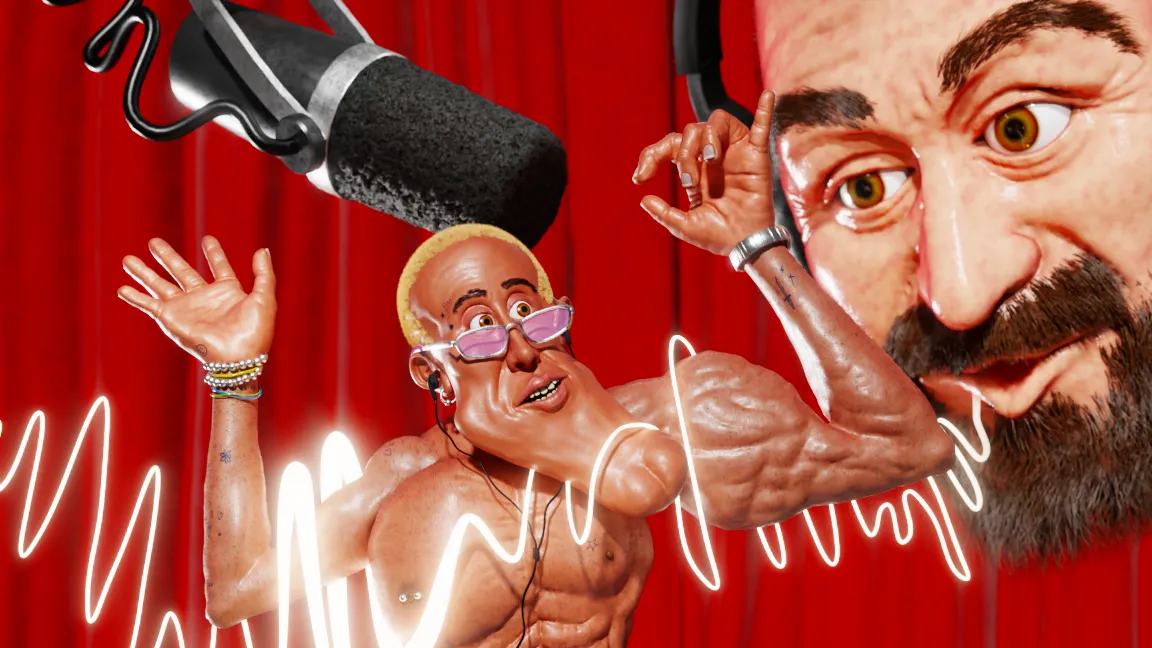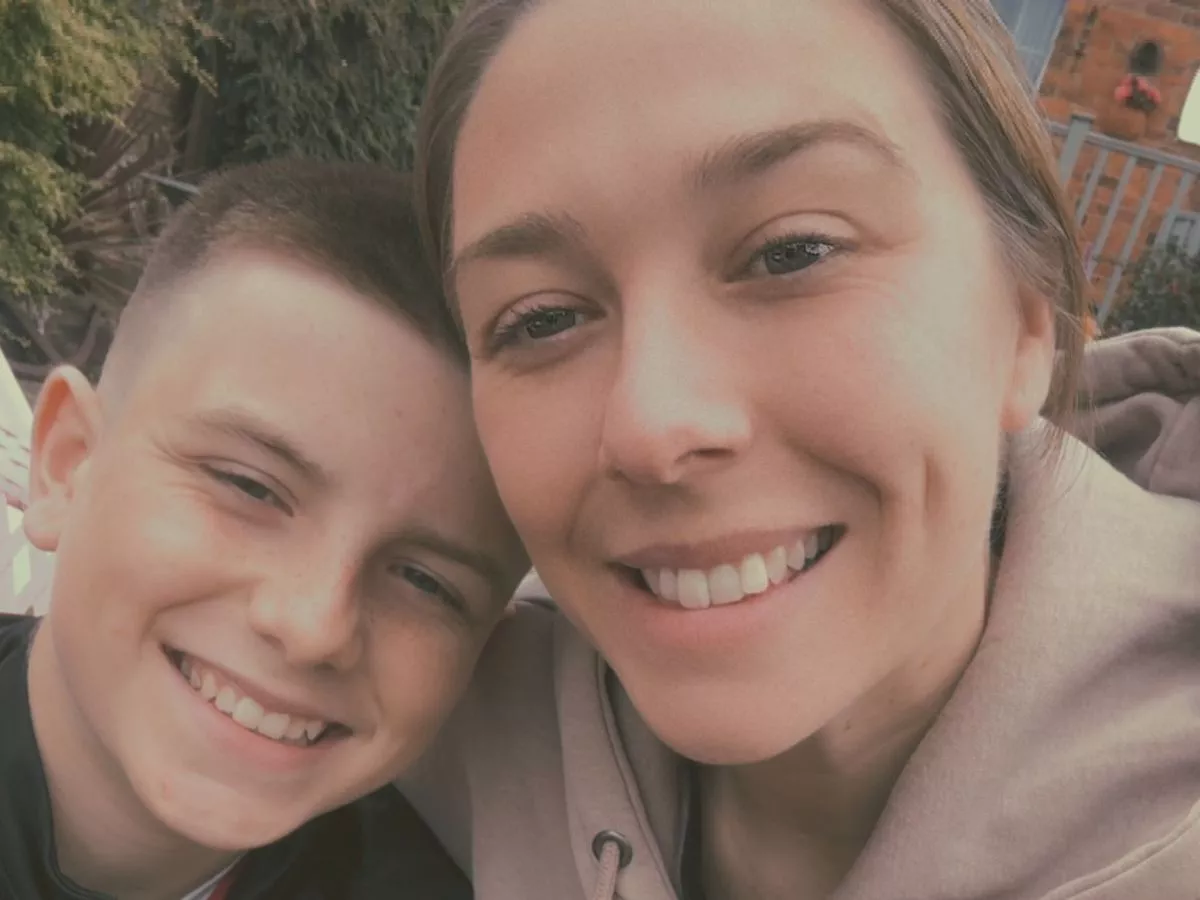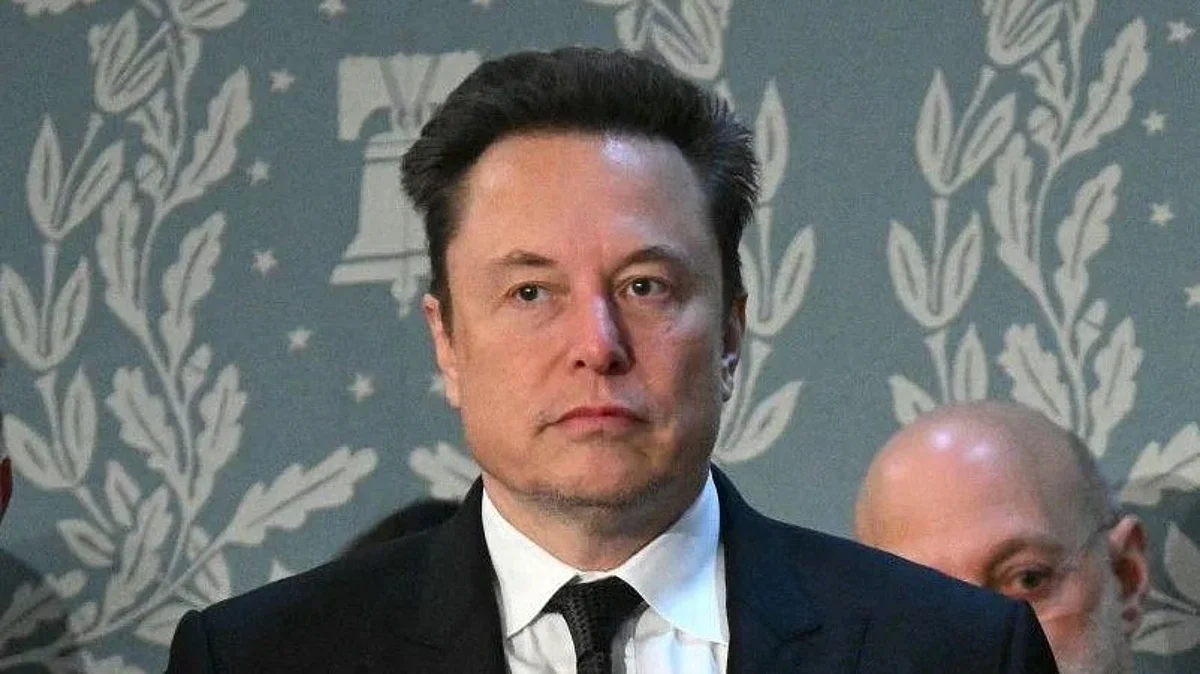By Joshua Hunt
Copyright gq

On a warm evening in May of 2024, Bryan Johnson, the 48-year-old tech entrepreneur who has spent millions of dollars attempting to reverse his biological age, hosted a dinner party. In attendance were Kim and Khloé Kardashian, their mother, Kris Jenner, and Andrew Huberman, a Stanford neuroscientist whose podcast, Huberman Lab, discusses how scientific research can be harnessed for personal improvement for an audience of millions.
At Johnson’s home in Venice, California, his guests ate broccoli, cauliflower, black lentils, and pudding made from walnuts, berries, pomegranate juice, macadamia nuts, and cinnamon. The meal was documented by the Kardashians’ camera crew, and when snippets from the evening were posted to social media, the default response seemed to be confusion: Fans of Huberman, whose appearances on The Joe Rogan Experience helped vault him to celebrity, imagined the burly, bearded academic leaving early to grab a steak. One Instagram user summed up the cognitive dissonance by saying it looked like an “AI generated evening,” while another called it “the collab nobody asked for.” But someone had asked for it, and that person was the celebrity plastic surgeon Jason Diamond.
The dinner itself was a rich text for anyone interested in charting the shifting sources of ideas about how bodies should look. Here were two prominent voices from the ascendant, phallocentric world of podcasting, where an urge to get square-jawed and kettlebell-yoked rises out of wide-ranging chitchat, alongside two women whose bodies were among the most scrutinized and idealized during the last decade of cable television’s cultural significance. (Kim Kardashian is a recipient of Diamond’s bespoke laser and platelet-rich plasma Diamond InstaFacial procedure.) What most fascinated and confounded me, though, was the fact that an old-school Beverly Hills plastic surgeon seemed to be the bridge connecting the previous paradigm to something new.
In March, I spent several afternoons at Dr. Diamond’s clinic, hoping to better understand the aesthetic aspirations of the manosphere mindset. It is a worldview and a resulting look one soon recognizes after diving into video podcasts like The Joe Rogan Experience, where it’s often difficult to tell the authors and academics from guests like ex-UFC fighters and former Navy SEALs. Generally, podcasters and YouTubers offer a filter on the world that is often heavily attuned toward the optimization of personal performance. They also tend to prioritize outcomes rather than specific philosophies, which may explain the vanishing taboo surrounding the use of steroids and testosterone replacement therapy. And as the podcasters have gotten more famous, the accessible interventions for achieving apex masculinity have become both more high-tech and more cosmetic. The opinions espoused on podcasts vary—neither Joe Rogan nor Andrew Huberman speaks highly of plastic surgery, for example—but what trickles down from podcasts is less so. A casual reader of the men’s health content over the past 10 years will have absorbed an enthusiasm for weight lifting and supplements that gave way to an interest in peptides and injectables, which are now giving way to a consensus about how men should look.
“More recently than not, I became pretty close friends with [Ultimate Fighting Championship CEO] Dana White,” said Diamond. He told me he has befriended other past and present UFC owners and executives as well. This fact did not surprise me. In the course of our time together, I’d seen Diamond eat premade keto meals for lunch. I’d heard him talk about cold plunges and creatine. And I had climbed into the cab of his massive Ford Raptor pickup truck, which would not look out of place in the rural Oregon town where my grandfather lives. At the end of my first day with Diamond, I drove with him to a podcast taping at a studio on Sunset Boulevard. The errand struck me as an indication of how things have changed in the world of plastic surgery since Diamond starred in the reality television series Dr. 90210, which aired on E! from 2004 until 2008.
In the truck, I asked Diamond how he knew Andrew Huberman; he told me they were “in the same circles.” Later, he explained that Huberman “got my number, called me to ask me some things…. I’ve worked out with him a couple times.” When Johnson, the longevity-obsessed tech entrepreneur, invited Diamond to the filmed version of his Don’t Die Dinner, Diamond said, the plastic surgeon brought Huberman with him. Dr. Diamond’s patients include any number of fighters who have been referred to him throughout the years by the UFC—a connection that probably goes some way toward explaining why Diamond is, as his head of operations and the cofounder of Diamond’s skin care line proudly claimed, “the only plastic surgeon Joe Rogan follows on Instagram.”
Between interviews, I spent many hours seated near the reception desk at The Diamond Face Institute, where I came to feel I could spot the difference between the people representing Diamond’s podcast appearances, and those representing Diamond’s years on television. At the clinic, I saw a world-famous stand-up comedian. Then there were the rich but not recognizable types, dressed in track suits paired with a Rolex Daytona or Patek Philippe Aquanaut; some were fit, others paunchy, and still others so fit as to suggest the use of testosterone.
They looked, in other words, like the sort of guys who might take a streamer’s advice on supplements, or listen to podcasts on the alleged links between mouth breathing and a weak jaw structure; the sort of guys who might have already tried out interventions like mastic chewing gum and silicone mouthpieces meant to strengthen and tone the jaw muscles, or mouth tape that forces a person to breathe through their nose while sleeping. (Recently, Huberman cited a book he read that seemingly suggested “beautiful jaw structure and high cheekbones” could be the result of “chewing on bones,” while a lifetime of eating soft foods could doom man to a more “droopy” profile.) But jaws-ercise, mouth taping, and carnivore diets can do only so much for those hoping to reclaim a Chad-like profile ceded to modern comforts like not chewing on bones. To have a jawline like, say, Tom Cruise, John Mulaney, or Andrew Huberman, some men will seize their biological destiny through more radical means.
For most of modern history, surgery to the maxilla and mandible—the upper and lower jaw—was reserved for the abatement of severe congenital disorders and assorted dental horrors. According to medical journals, it became more common in the United States after the Civil War, when surgeons and dentists were conscripted into the reconstruction of combatants who were overwhelmingly and variably disfigured. Another leap followed with the outbreak of the First World War, which produced more patients amid an increasingly robust transatlantic literature to document and disseminate new techniques. From this international consensus emerged a generation of plastic surgeons dedicated to a wider range of elective procedures, including jaw surgery.
By the time Dr. Diamond opened his practice in Beverly Hills, in 2003, the tools of this trade included less invasive interventions like Botox injections and buccal-fat removal. But he was particularly drawn to a specialization in chin, cheek, and jaw implants, in part because two of his mentors had designed some of the first implants at the company Implantech, which manufactures a range of cosmetic implants to enhance the look of the chin, the calf, the pectoral and gluteal muscles, and other body parts. What most interested Diamond, he told me, were custom chin, cheek, and jaw implants tailored to each individual, as opposed to the off-the-rack fare that, according to Dr. Diamond, remains standard throughout most of the industry. He began commissioning custom implants based on CT scans showing each patient’s actual bone structure and soft tissue, which, along with the face- and neck-lift procedures that got him acclaim in the field, earned him a niche that would help land him on Dr. 90210.
Dr. Diamond illustrated the difference between custom and standardized implants by taking a small box from his office to the practice’s rooftop patio overlooking Beverly Hills and scattering its contents across a table. Out spilled several life-size skulls made from pink and light yellow resin—and with them a range of orange, red, blue, and green implants roughly the size of Band-Aids, but thicker, and made from solid silicone. “These are real replicas of different people,” Diamond said of the candy-colored skulls. In fact, they were all people whose faces I would recognize from films and television programs. As he pressed the inferior off-the-rack implants against each skull, demonstrating how seldom every part of the silicone was flush with the entirety of the bony structure, a man waved from the elevator. “He’s probably the most famous DJ in the world,” Diamond said.
Actors who emote at close range for a living are not the only people who benefit from facial optimization, it seems. Consider the patients the UFC has been referring to Dr. Diamond—superstar fighters whose faces, in addition to being punching bags, secure lucrative sponsorship deals and post-octagon careers in film or broadcasting. “They’re coming in for immediate fracture repairs, some laceration repairs, some cauliflower ear, stuff like that,” Diamond told me. A few of them go further and, postretirement, get the odd bit of purely cosmetic work done. “The reality is, it’s like anything else: People who are more attractive tend to make more money because people want to see them.”
Joey Zauzig, an actor and social media influencer who met me at The Diamond Face Institute one afternoon, said he started getting Botox (“preventative” work, as he calls it) at age 26. “I just didn’t want the wrinkles, babe,” Zauzig told me. He is now 33 and credits Dr. Diamond’s filler facial sculpting work on his chin, jaw, and temples with helping his career. “Online, everyone always comments on how good my jaw and chin looks and how masculine it makes you feel. When I had more of a rounder jaw, I think my videos didn’t pop as much, so they didn’t do as well.” Getting cosmetic work done has become “part of my persona,” he said.
Because of the dominance of video platforms like YouTube and Twitch, it is easy to imagine vanity as an increasingly important part of the persona for even archetypally unattractive professions like stand-up comedians and shock jocks. Unlike most nouveau riche, whose preoccupations go largely unnoticed, the manosphere’s most compelling voices are predisposed to a mode of storytelling meant to extract meaning from every aspect of their lives. Last year more than half of Spotify’s top 20 podcasts were published as videos, which means the hosts of these programs must now sit in front of the camera for hours each week, and in some cases every day, broadcasting their image to millions of dedicated viewers, as well as the passersby who catch clips on YouTube or TikTok.
While researching this article, I got into the habit of watching a number of video podcasts, and the appeal was obvious; for men with fewer close friendships than in previous generations, and fewer economic and romantic prospects, it must be comforting to have hours upon hours of mindless male chitchat to drown out the silence that might otherwise characterize so much of their daily lives. But there are only so many hours one can listen to podcasts, even as background noise, without absorbing the podcaster’s ideas and anxieties. The dozens of hours of manosphere podcasts I listened to left me curious, first professionally, then personally, about how the sort of men I was reporting on might view me—which, in turn, made me wonder whether there was some truth to Dr. Diamond’s theory of value insofar as my own career was concerned.
Late one afternoon, while Dr. Diamond was in his office exchanging text messages with Andrew Huberman, I asked him about looksmaxxing, the hypermasculinization trend that gestated for years on incel message boards before bursting into the mainstream through TikTok videos and internet memes. To my shock, he had never heard the term but recognized its hallmark interests as soon as I began describing it.
“My kid this morning, he says, ‘Dad, I need buccal-fat removal.’ He’s 17 years old,” Diamond said. He later told me, “By the way, my 14-year-old son has been taping his mouth shut to sleep.”
Diamond’s older son, the 17-year-old, spoke to me recently about his own experiments. “I was doing jawline gum for a little bit, then jawline exercisers,” he said. “I heard about the jaw exercisers through TikTok, and then I heard about the mastic gum through my dad.” He knew other kids who did the same, and it was not uncommon, he said, for them to compare notes. He added that they were less cosmetically minded about their own appearance than younger kids; instead of aiming for a specific look, Diamond’s son said, he and his friends are simply interested in self-improvement.
“Getting older, now, like, all of our friends are in the gym,” he said. “Even kids that, a year ago, I thought wouldn’t ever touch a weight, like, now all our friends are lifting…. So I’d say it’s kind of the same thing with the jawline and the looksmaxxing kind of thing because everyone kind of comes together, so it’s not like you’re feeling this pressure to get a better jawline than your friends, let’s say. You’re just with your friends, just bettering yourself.”
Thinking of looksmaxxing as a social phenomenon clarified for me the value of podcasts that traffic in everything from comedy and the culture wars to the life lessons of ex-Navy SEALS: bullshitting. Like the real friends so many men no longer make, or can’t seem to keep, often the podcast hosts of the manosphere seem to be a reliable source of the cherished tradition of running off at the mouth about books one hasn’t read, articles one heard about from other people, and Wikipedia entries one only sort of remembers. Academically minded podcasters like Huberman often cite actual research, but even so, in the context of an hours-long podcast episode, the takeaways begin to sound as hyperbolic as the idea of chewing on bones as a path to a more handsome jawline.
In conversations with Diamond, I suggested Rogan had come to be a sort of Kardashian-like figure for men—someone whose aesthetic had made them a thought leader and guiding light for gender maximalists. But later I began to believe The Joe Rogan Experience is much more like Gwyneth Paltrow’s Goop for men: offering a sense of companionship on the journey toward optimization, led by a rich guy who’s not gatekeeping his best shit.
One of Dr. Diamond’s patients is Bryan Callen, a stand-up comic and actor who sometimes does color commentary on a podcast alongside Joe Rogan for UFC bouts. After hearing Callen talk about getting his eyelids done on one of his own podcasts—Diamond had told him the surgery would help him look like he got more sleep—I reached out to the comedian in hopes of understanding the manosphere’s embrace of something as ostensibly feminine and queer-coded as plastic surgery.
“There’s no longer a stigma on vanity for men,” Callen told me. One reason for this, he believes, is the extent to which health-centric podcasting has become the lens through which a large part of the population gets information. To my mind, the decline of the doctor-patient relationship, which has suffered from both the high cost of health insurance and the mixed signals Americans received from health care officials during the COVID pandemic, has undoubtedly made alternative wellness even more popular. And with it an increasingly hazy sense of where health ends and aesthetics begin. “Longevity is the new false god,” Callen told me. “This is not new, but technology is making it so you can look a lot better at a much more affordable price, much more quickly, and with less people actually noticing what’s going on.”
Still, the only male patient who would talk to me about his Diamond chin was a high-powered Hollywood executive. He asked that I not use his name, because, as he put it: “I don’t want everyone in town to know I’ve got a chin implant and neck lift,” which led me to wonder whether his new face has indeed gone unnoticed. The average male plastic surgery patient, meanwhile, seems reluctant to admit his aesthetic aspirations even to himself. Instead, Dr. Diamond told me, he might come first with a spouse or a girlfriend, and make an appointment to have a mole checked out. Then, in the privacy of an examination room, they hint at a certain openness—to filler, Botox, maybe even a new chin. “Guys need the permission of the universe to say it’s okay to want to address something,” Diamond said.
Like many men, I expect, I am fairly agnostic about the way I look. Most of my waking hours are spent looking outward or dwelling inward, after all, but in Beverly Hills it is impossible not to think about one’s appearance. Near the end of my time with Dr. Diamond, I agreed to undergo a consultation. Just to discover what was possible. Some photographs were snapped in an exam room where, a few days earlier, I had looked on as Dr. Diamond injected Botox and his signature Diamond Facial Sculpting filler into the face of a Fortune 500 executive who said she couldn’t get enough time away from work to recover from a facelift. A few minutes later, after hand-shaping my photographs in a computer program, he showed me what kind of jawline I could have for six figures.
“You do have a weak chin,” Dr. Diamond told me. “A slightly weak chin. You would definitely benefit from a chin implant.”
However ambivalent I was about my “slightly weak chin,” there was no denying the appeal of the jawline Dr. Diamond had imagined for me. He provided two photographs, one showing my improved jawline in profile, the other showing it from the front. The proportions of my reimagined chin made me look slimmer. Healthier. What really unsettled me, though, was not how different I looked but how much I managed to still look like myself—there I was, inarguably more handsome, and somehow still me. For weeks afterward, each time I looked at the photos, it felt more and more like looking at myself, as opposed to a computer-generated simulacrum.
Because of the time I’d spent at the clinic, I could imagine each of the steps that would bring my new jawline into being: First, a CT scan of my skull would be used to design a custom silicone implant whose shape would match the unique contours of my chin and jaw bones; once fabricated, the implant would be pushed through a tiny incision on the underside of my chin. “Most of the population already has a scar there from when they were kids,” Dr. Diamond had said. “Everybody does.” I could also imagine what kind of person I would need to become in order to take such a step—not only richer but permanently dissatisfied, forever subject to a work-in-progress sense of my own being. It would also require my acquiescence to a world-view I find depressing; one that assigns too much value to the way we look and too little to charm, intelligence, and every other mysterious quality that draws us to one another.
I had read that many patients grow a beard after plastic surgery, and assumed they did so to hide the scars. Not so, said Diamond. “When people are healing from a surgery, people are going to say, ‘You look good. What is it?’ If you grow a beard, it’s like, ‘Oh, my beard just looks good.’ It gives you another excuse.”
Joshua Hunt is a GQ correspondent based in Tokyo.
Illustrations by Jellygummies.
A version of this story originally appeared in the October 2025 issue of GQ with the title “Body by Podcast”



